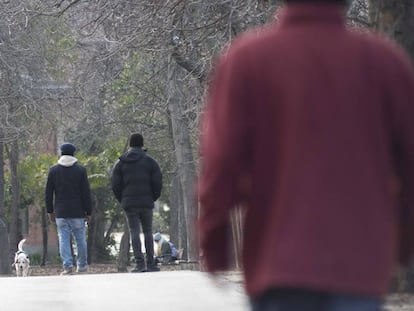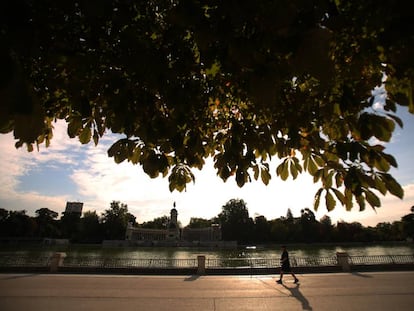Madrid’s Retiro Park and Paseo del Prado granted World Heritage status
Many sites in Spain have been recognized by UNESCO for their outstanding universal value, but up until now, none of them were located in the Spanish capital
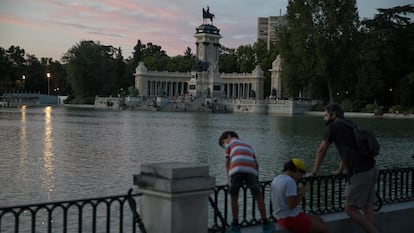

Madrid’s famous Retiro Park and Paseo del Prado boulevard have been added to UNESCO’s World Heritage List. The decision, made on Sunday, brings the total number of World Heritage Sites in Spain to 49 – the third-highest in the world after Italy and China.
Up until Sunday, none of these sites were located in the Spanish capital. The Madrid region, however, was home to four: El Escorial Monastery in El Escorial, the historic precint of Alcalá de Henares, the historical center of Aranjuez and the Montejo beech forest in Montejo de la Sierra.
Spanish Prime Minister Pedro Sánchez celebrated the news on Twitter, saying it was a “deserved recognition of a space in the capital that enriches our historical, artistic and cultural legacy.”
Madrid y toda España están hoy de enhorabuena.
— Pedro Sánchez (@sanchezcastejon) July 25, 2021
El Paseo del Prado y El Retiro son ya Patrimonio Mundial de la UNESCO. Merecido reconocimiento a un espacio de la capital que engrandece nuestro legado histórico, artístico y cultural.
¡Felicidades! #MadridPatrimonioMundial pic.twitter.com/3V83wjbbOm
Retiro Park is a green refuge of 118 hectares in the center of the city of Madrid. Paseo del Prado boulevard is another icon of the capital, featuring six museums, major fountains such as the Fuente de Cibeles as well as the famous Plaza de Cibeles square.
For the sites to be granted World Heritage status, Spain needed the support of two-thirds of the UNESCO committee – 15 votes from 21 countries. The proposal was backed by Brazil, Ethiopia, Russia, Uganda, Nigeria, Mali, Thailand, Kyrgyzstan, Oman and Saudi Arabia, among others.

Prior to the vote, the International Council on Monuments and Sites (ICOMOS), the organization that advises UNESCO, had argued against considering the Paseo del Prado and Retiro Park as one site, and recommended that the latter be left out on the grounds that there were no “historic justifications” for the two to be paired.
This idea was strongly opposed by Spain’s ambassador to UNESCO, Andrés Perelló, who said: “What they are asking us to do is rip out a lung from Madrid. El Prado and El Retiro are a happy union, whose marriage is certified with a cartography more than three centuries old.” The origins of Paseo del Prado date back to 1565, while Retiro Park was first opened to the public during the Enlightenment.
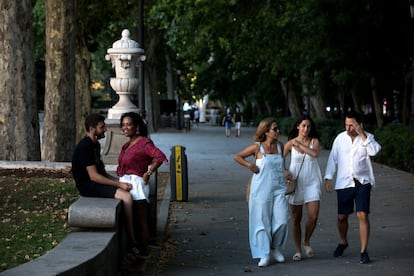
The ICOMOS report also denounced the air pollution surrounding the site. To address these concerns, Madrid City Hall indicated it plans to reduce car traffic under its Madrid 360 initiative, which among other things is set to turn 10 kilometers of 48 streets into pedestrian areas, but is considered less ambitious than its predecessor Madrid Central.
The 44th session of the World Heritage Committee took place in the Chinese city of Fuzhou and was broadcast live at Madrid’s El Prado Museum. Perelló summed up the reasons to include Retiro Park and El Paseo de Prado in less than three minutes.
“When people say ‘from Madrid to heaven’ [the slogan of the Spanish capital] I ask myself why would you want to go to heaven when heaven is already in Madrid,” he told delegates at the event, which was scheduled to take place in 2020, but was postponed due to the coronavirus pandemic.
Every year, UNESCO evaluates 25 proposals for additions to the World Heritage List. In the case of the Paseo del Prado and Retiro Park, the site was judged on whether it evidenced an exchange of considerable architectural influences, was a representative example of a form of construction or complex and if it was associated with traditions that are still alive today. The famous park and boulevard sought to be inscribed on the UNESCO list in 1992, but its candidacy did not reach the final stage of the process.
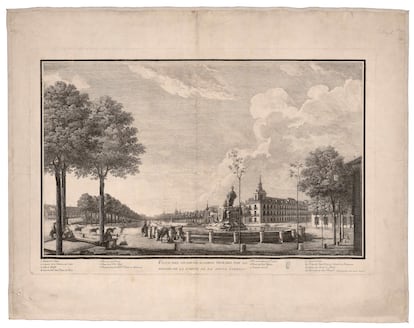
The effort to win recognition for the sites’ outstanding universal value began again in 2014 under former Madrid mayor Ana Botella, of the conservative Popular Party (PP), and was strengthed by her successor Manuela Carmena, of the leftist Ahora Madrid party, which was later renamed Más Madrid. An advisor from UNESCO visited the site in October 2019.
English version by Melissa Kitson.
Tu suscripción se está usando en otro dispositivo
¿Quieres añadir otro usuario a tu suscripción?
Si continúas leyendo en este dispositivo, no se podrá leer en el otro.
FlechaTu suscripción se está usando en otro dispositivo y solo puedes acceder a EL PAÍS desde un dispositivo a la vez.
Si quieres compartir tu cuenta, cambia tu suscripción a la modalidad Premium, así podrás añadir otro usuario. Cada uno accederá con su propia cuenta de email, lo que os permitirá personalizar vuestra experiencia en EL PAÍS.
¿Tienes una suscripción de empresa? Accede aquí para contratar más cuentas.
En el caso de no saber quién está usando tu cuenta, te recomendamos cambiar tu contraseña aquí.
Si decides continuar compartiendo tu cuenta, este mensaje se mostrará en tu dispositivo y en el de la otra persona que está usando tu cuenta de forma indefinida, afectando a tu experiencia de lectura. Puedes consultar aquí los términos y condiciones de la suscripción digital.
More information
Últimas noticias
Aquilino Gonell, former Capitol sergeant: ‘If it hadn’t been for the police, the US would be a dictatorship’
A hybrid building: Soccer pitch, housing, and a shopping mall
Europe urges Trump to respect Greenland following annexation threats
Science seeks keys to human longevity in the genetic mixing of Brazilian supercentenarians
Most viewed
- Alain Aspect, Nobel laureate in physics: ‘Einstein was so smart that he would have had to recognize quantum entanglement’
- Mexico’s missing people crisis casts a shadow over World Cup venue
- Why oil has been at the center of Venezuela-US conflicts for decades
- Alvin Hellerstein, a 92-year-old judge appointed by Bill Clinton, to preside over Maduro’s trial in New York
- Cuba confirms death of 32 of its citizens in the US attack against Venezuela
